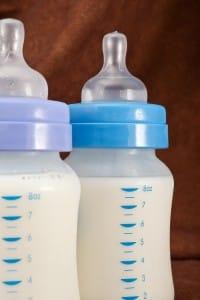
Keep Breast Milk Safe: Tips for Handling, Storing and Thawing
More mothers are breast feeding their children, which is a wonderful thing. Breastfeeding your infant or child, when they are ready to eat, is ideal. Yet, sometimes that isn’t possible. Working moms and on-the-go moms often pump (express) their breast milk and store it for the baby to eat later. I remember the first time I tried to pump and store my breast milk. It was the last few weeks of my maternity leave and I was preparing to go back to work. I received a lot of support from my hospital coworkers after my delivery about how to breastfeed. After pumping my breast milk, I put it in a storage container and realized what I was missing. I had no idea how to properly store the milk once I pumped it. That led to a couple of frantic calls to my lactation specialist and some Internet searching. This is what inspired this blog post. I want to help moms—whether working, on the go or stay at home—know how to safely store and handle breast milk.

Pumping and Storing Breast Milk
As with any other food, safe handling and storage of breast milk is necessary to keep the quality of the breast milk high and prevent foodborne illness. For example, USA Today reported that three in four samples of breast milk purchased on a public milk-sharing website contained disease-causing bacteria.
How to safely pump breast milk and store it:
- Wash your hands before pumping or handling breast milk.
- Use the right equipment to store breast milk. If you are storing in bottles, make sure they are clean and can be tightly sealed (with a screw cap). If you are using bags, only use bags that are designed to store breast milk. Avoid using food storage bags or baby bottle liners because they aren’t designed to store breast milk and they can leak.
- Use storage bags only one time (do not reuse storage bags).
- Storage bottles can be reused but they must be cleaned in between each use.
- Never add fresh breast milk to frozen breast milk in a storage container.
- Don’t save milk that has been reheated to use at another feeding.
- Label milk with the date you expressed it. Make sure the date is easy to read. This way you will know how long it can be safely stored, which I explain below.
- If you are bringing milk to a child care provider, label the container with your child’s name and the date. Make sure the label is easy to read.
Location and Temperature Limits for Storing Breast Milk
| LOCATION | TEMPERATURE AND TIME |
| Room temperature | Up to 77⁰F or 25⁰C for up to 4 hours |
| Cooler with ice pack | Up to 24 hours |
| Refrigerator (fresh and thawed milk) | 40⁰F or 4⁰C for up to 48 hours |
| Home freezer (combined with a refrigerator) | Up to 3 months |
| Fortified freezer (deep freezer) | -4⁰F or 20⁰C for up to 6-12 months |
Once thawed, breast milk should be used within 24 hours. Throw away breast milk that has gone beyond these storage time limits.
Thawing Breast Milk
The best method for thawing milk is transferring the frozen milk container to the refrigerator or swirling the container in a bowl of warm water. Do NOT use boiling water and microwaves because it overheats (or heats unevenly) the milk and can injure the baby or destroy the nutrient quality of the milk. Avoid re-freezing your breast milk once you have thawed it out.
I hope this post eases your anxiety and empowers you to confidently pump, store and thaw breast milk for your child. Babies need the best nutrients, many of which come from breast milk. I encourage you to share this post with other breast feeding mommas.

